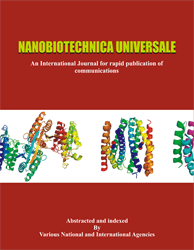Phenotypic Variability, Heritability and Trait Association of Durum wheat (T. Turgidum var. durum L.) Genotypes in Central Ethiopia
Masresha Hailu1, B. Chandra Sekhar Singh2*, Negash Geleta3 and Gudeta Nepir4
1,2,4Department of Plant Science, School of Agriculture, Gudar Mamo Mezemir Campus, Ambo University, Ambo, Ethiopia (East Africa) 3Debre Zeit Agricultural Research Center (DZARC), Debre Zeit, Ethiopia (East Africa) 2*Corresponding author - Email: singhsekhar960@gmail.com
ABSTRACT
The experiment aimed to identify superior durum wheat genotypes for grain yield across various environments and to assess phenotypic variability, heritability, and trait associations within and among populations in central Ethiopia. Analysis of variance (ANOVA) conducted for each site revealed significant differences (P < 0.05) among genotypes for all traits at Debre Zeit and Minjar, except for grain filling period and number of tillers. Combined ANOVA indicated significant differences among tested genotypes for all measured traits, highlighting substantial variability. The location x genotype interaction was significant (P < 0.01) for days to 90% maturity, grain filling period, grain yield, biomass yield, harvest, and grain filling period. Notably, DWNE9 (4054 kg/ha), Fetan (3873 kg/ha), Werer (3784 kg/ha), Denbi (3766 kg/ha), and Mangudo (3723 kg/ha) emerged as top high-yielding genotypes across the two locations. Grain yield exhibited strong positive associations with number of grains/spikes, 1000 kernel weight, hectolitre weight, biomass yield, and harvest index, both at genotypic and phenotypic levels. Conversely, significant negative correlations were observed between grain yield and date of heading, plant height, number of tillers, spike length, number of spikelet/spikes, and grain protein content at both genotypic and phenotypic levels. High estimates of heritability (greater than 70%) coupled with substantial genetic advance as a percent of the mean (greater than 20%) were noted for plant height, spike length, number of grains per spike, grain yield, and harvest index, indicating potential for selecting the top 5% of the base population to significantly enhance mean values. Cluster analysis categorized the 49 durum wheat genotypes into three clusters, with most advanced and released varieties grouped together, exhibiting superior grain yields. The study emphasizes ample phenotypic variations among durum wheat genotypes, highlighting their potential for multi-environment evaluation and genotype-environment interaction studies to assess grain yield stability. Moreover, the populations represent valuable breeding resources for durum wheat improvement initiatives.
